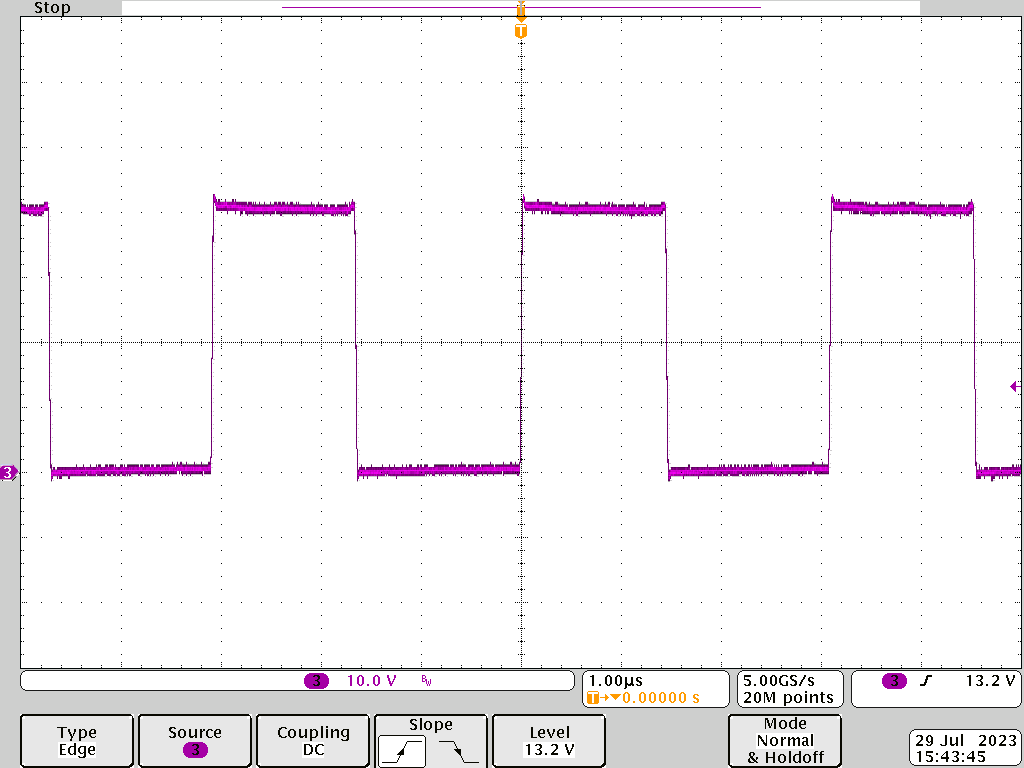TIDT349A January 2024 – December 2024
- 1
- Description
- Features
- Applications
- 1Test Prerequisites
- 2Testing and Results
-
3Waveforms
- 3.1 Charge Mode Start-Up Waveform
- 3.2 OTG Mode Start-Up Waveform
- 3.3 Voltage Transition at OTG Mode
- 3.4 Ripple and Noise at OTG Mode
- 3.5 Load Transients at OTG Mode
- 3.6 Switching Waveform
- 3.7 Overcurrent Protection at OTG Mode
- 3.8 Short-Circuit Protection at OTG Mode
- 3.9 Short-Circuit Protection at Charge Mode
- 4Trademarks
3.6 Switching Waveform
The following images show the power stage waveform at different working modes in BQ25756 among buck mode, buck-boost mode, and boost mode with seamless transition. The switching frequency is set to 300kHz.

Blue: buck leg switching point, Purple: boost leg switching point
Figure 3-21 Buck Mode
Blue: buck leg switching point, Purple: boost leg switching point
Figure 3-23 Boost Mode
Blue: buck leg switching point, Purple: boost leg switching point
Figure 3-22 Buck-Boost Mode Figure 3-24 Switching Leg Waveform at Vsys = 20V, Vbat = 40V Full-Load Charging Mode,
Figure 3-24 Switching Leg Waveform at Vsys = 20V, Vbat = 40V Full-Load Charging Mode,fSW = 300kHz